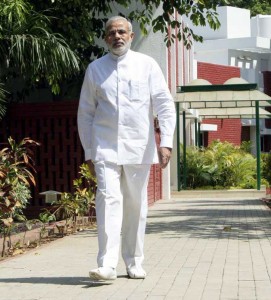Indian Prime Minister’s visit to the United States comes after Modi’s series of bilateral interactions with regional and global heavy weights. This fast paced movement in foreign policy in such a short span of four months of formation of the nationalist government is noteworthy. The strength of Indian ballot behind the new disposition is evident the way India has set out to script the new rules of geo-politics or geo-economics keeping herself at the centre stage.
Among regional issues, situation in the Af-Pak region and the Middle East will dominate discussions. India’s energy demands are rising by the day India is likely to seek partnership in solar energy and importing LNG and shale gas. There will be considerable focus on clean energy partnership. Transfer of high-technology from the USA will be another major area of focus during this visit.
The US led action against ISIS has not been commented upon by India so far, the silence signals a probable shift towards strategic convergence.
But the larger question still hangs. Can India and the United States create a strategic partnership that will further the security and foreign policy interests of both countries?
Given the divergent worldviews of the two countries seen in past decades, now they show signs of convergence. Alarmed by the so called peaceful rise of China and the expansionist tendencies displayed by dragon, a realisation in Japan and India has been brought about that each is located in a very dangerous neighbourhood and that their security ties with the US are critical. The US finds itself aligned to these concerns and has started to pivot in South Asia.
On to its west India has been very vocal against the policies of the western powers particularly the US on forced regime changes and military interventions in the Arab world. The emergence of ISIS appears to have changed that all. The US led action against ISIS has not been commented upon by India so far, the silence signals a probable shift towards strategic convergence.
As we stand today the United States has virtually recognised India into a de jure nuclear weapons state. Indian policy makers also are no longer concerned about the reliability of the United States as a supplier of high technology. However continued U.S. support to Pakistan is seen as slowing down the positive growth of the relationship.
Notwithstanding that, the two countries do, however, have complementary interests, and it is in American interests to facilitate the development of a strong India that can play a role in ensuring strategic stability in Asia as well as promoting shared values of democracy and secularism. U.S. interests partially are served by having India work to secure multilateral security initiatives in Asia, particularly in the Indian Ocean littoral.
…Modi has to ensure India does not compromise its Strategic Autonomy so obsessively guarded ever since the independence.
The US role in bringing India Japan and Australia closer in a strategic bind cannot be ignored. China is worried today by the transformation of India from inflexible nonalignment to geopolitical pragmatism, moving closer to Japan, the “Land of the Rising Sun” which is moving toward greater realism in its foreign policy. Indo-Australian civil nuclear deal is yet another mile stone that brings the two majors of the forgotten Indian Ocean together.
Therefore the question is, will this visit to US hint the world towards revival of Abe initiated Quadrilateral Security Dialogue (QSD) between Asia’s maritime democracies: Australia, India, Japan, and the United States or see India resist any grouping that restricts the pace and flexibility with which an informal network of strong bilateral partnerships can stand up against international challenges in much the same way that the QSD could.
The wish list may be long but two major areas that will define the future course of strategic partnership amongst the two countries would be the manner in which India and the US complete the last bit of their nuclear deal, known as “administrative arrangements.” And in the field of defence cooperation, by ironing out each other’s concerns on transfer of technology necessary for India towards realisation of its goal of self-reliance and indigenisation in defence production.
Whatever be the outcome Mr Modi has to ensure India does not compromise its Strategic Autonomy so obsessively guarded ever since the independence.





